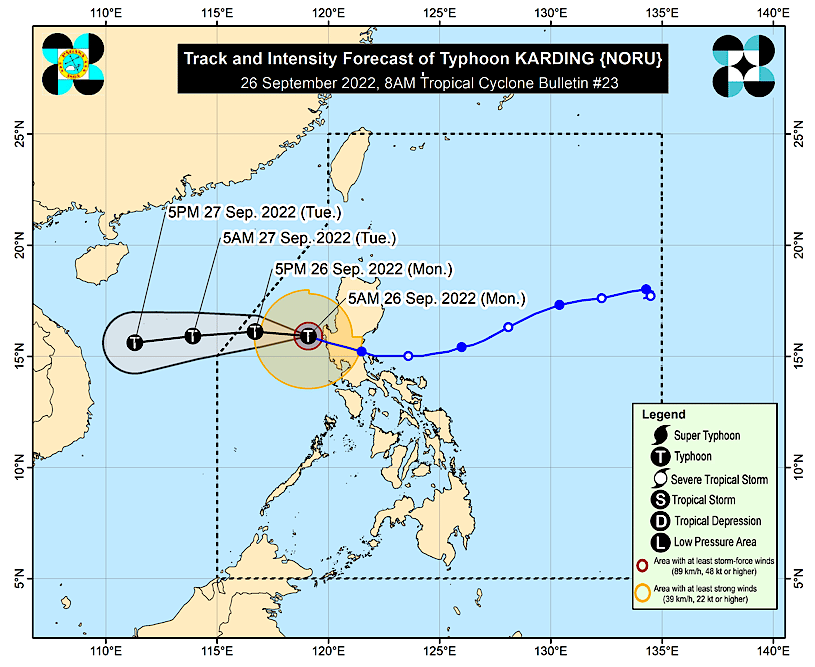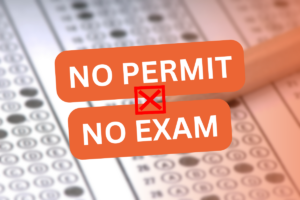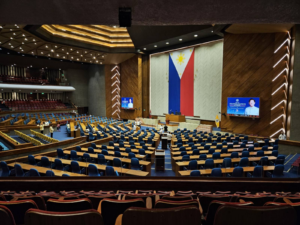
MANILA – Typhoon Karding (international name: Noru) has maintained its strength as it moved farther away from Luzon on Monday morning.
In its 8 a.m. bulletin of the Philippine Atmospheric, Geophysical and Astronomical Services Administration (PAGASA), Karding was last spotted 190 kilometers (km) west of Dagupan City in Pangasinan, and is expected to exit the country’s area of responsibility on Monday evening.
It has maintained its maximum sustained winds of 140 kilometers per hour (kph) near the center and gustiness of up to 170 kph.
Tropical Cyclone Wind Signal No. 2 remains hoisted over the western section of Pangasinan and northern portion of Zambales, while Signal No. 1 was still in up in La Union, the rest of Pangasinan, southern portion of Benguet, the rest of Zambales, northern portion of Bataan, Tarlac, Pampanga, and the western portion of Nueva Ecija.
“Gale-force conditions remain possible within any of the areas where Wind Signal No. 2 is hoisted, while strong winds—strong breeze to near gale strength—may still be experienced within any of the areas where Wind Signal No. 1 is currently in effect,” PAGASA said.
Moderate to intense rains may also persist in Zambales, Bataan, and Lubang Islands.
Moreover, light to heavy rains may prevail over the western portion of Pangasinan.
“Under these conditions, scattered flooding and rain-induced landslides are still possible, especially in areas that are highly or very highly susceptible to these hazards as identified in hazard maps and in localities with significant antecedent rainfall,” PAGASA said.
In the next twenty-four hours, occasional rains are expected across the western portions of Central Luzon, Southern Luzon, and Visayas due to the southwest monsoon or “habagat” enhanced by Karding.















